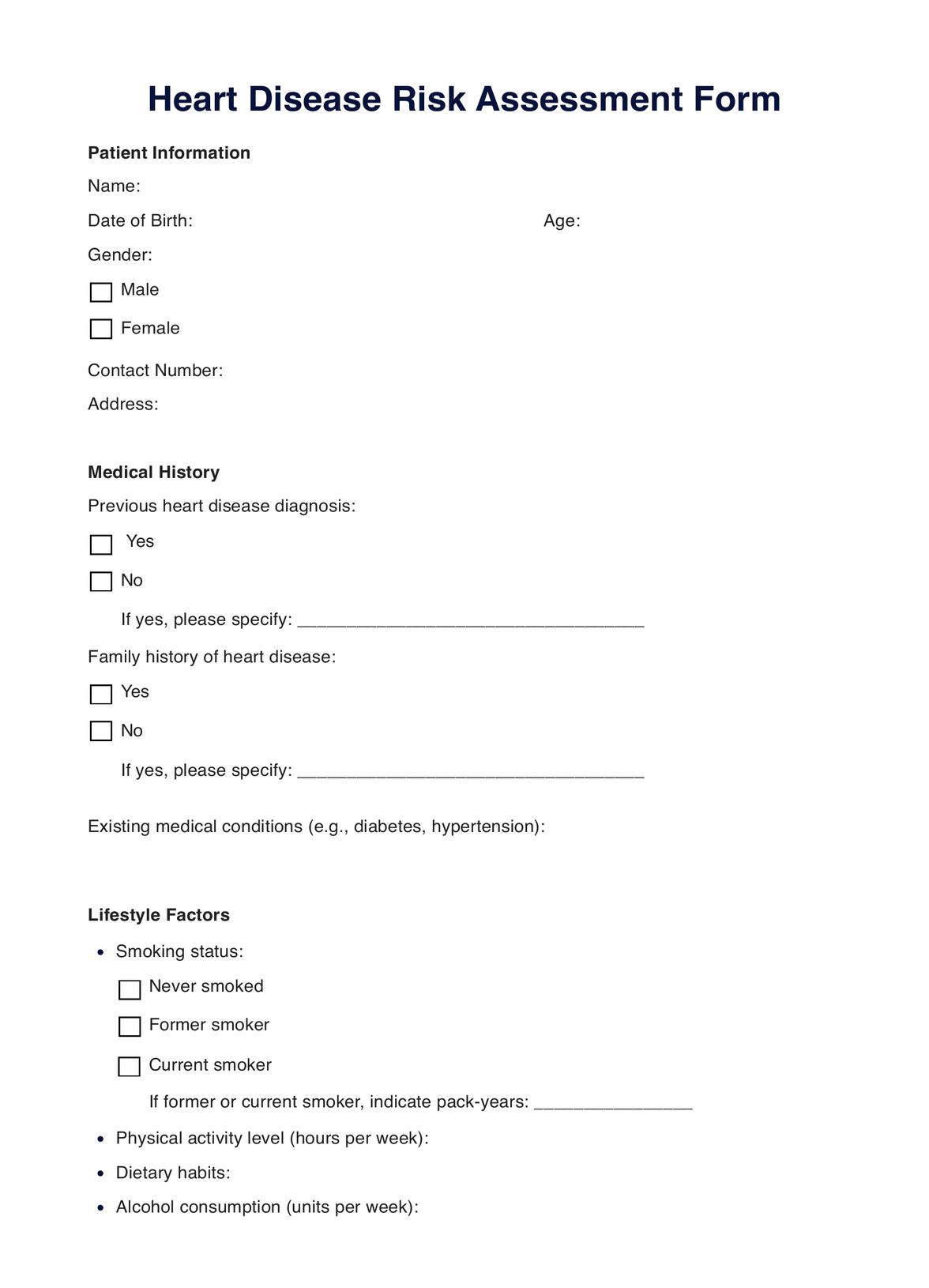Healthcare providers, including doctors and nurses, often request Heart Disease Risk Assessments during routine check-ups. Individuals concerned about their heart health can also request one from their healthcare provider.

Heart Disease Risk Assessment
Heart Disease Risk Assessment can help you assess your risk and take proactive steps towards a healthier heart. Take charge of your heart health now.
Heart Disease Risk Assessment Template
Commonly asked questions
Heart Disease Risk Assessments are used during routine health check-ups, when patients have specific heart-related symptoms, or as part of preventive health initiatives, workplace wellness programs, and research studies.
These assessments involve collecting information about a person's medical history, lifestyle, physical measurements, and blood test results. The data is then analyzed to calculate a risk score, categorize risk levels, and guide recommendations for heart-healthy living.
EHR and practice management software
Get started for free
*No credit card required
Free
$0/usd
Unlimited clients
Telehealth
1GB of storage
Client portal text
Automated billing and online payments











